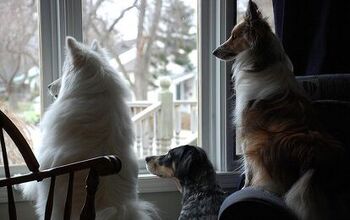5 Smart Tricks to Ease Your Dog’s Separation Anxiety
Separation anxiety in dogs is more common than many pet parents realize. It can manifest as destructive behavior, excessive barking, whining, pacing, or even accidents in the house.
These are all signs that your dog is struggling to cope with being left alone. Luckily, with consistency and patience, you can ease your furry friend’s distress.
Here are five smart tricks to help your dog feel more secure when you're not around.
Disclosure: PetGuide may receive a small affiliate commission from purchases made via links in this article but at no cost to you.
Table of contents
1. Create a Calm Departure Routine
Dogs are incredibly perceptive and can pick up on the signs that you're about to leave, such as grabbing keys, putting on shoes, or even spraying perfume. These cues can trigger anxiety before you're even out the door.
To reduce this anticipatory stress:
- Practice “fake” departures without leaving.
- Avoid dramatic goodbyes or overly enthusiastic hellos
- Use a specific word or cue (like “I'll be back”) to help your dog understand the pattern and build trust over time.
Over time, this routine teaches your dog that your departures are temporary and not something to dread.
2. Provide Long-Lasting Distractions
A mentally stimulated dog is far less likely to panic. Use puzzle games or treat-dispensing toys to keep their mind engaged while you’re gone.
Some popular options include:
- Kong toys stuffed with dog-safe peanut butter or frozen treats
- Snuffle mats that encourage foraging behavior
- Puzzle feeders that challenge your dog to “solve” their way to a reward
These distractions not only make your absence less noticeable but also create positive associations with alone time.
3. Use Desensitization Training
If your dog becomes anxious even when you're gone for a short time, gradual desensitization can help. Start by leaving them alone for a micro amount of time and gradually increase the duration.
Here’s how:
- Step outside for one minute seconds, then return before your dog gets anxious.
- Slowly build up to longer absences over several days or weeks.
- Reward calm behavior with praise or treats.
4. Make Their Space Comforting
Creating a safe, cozy environment can ease your dog’s anxiety. Some dogs feel more secure in a crate, while others prefer a gated-off room.
Make the space appealing with:
- Their favorite bed or blanket
- An item of your clothing that smells like you
- Soft music or a white noise machine (there are even dog-specific playlists out there!)
This safe zone acts like a comfort cocoon, giving your dog a familiar, peaceful place to relax while you're away.
5. Speak To Your Vet
If your dog’s anxiety is severe, your vet may recommend anti-anxiety medications. These generally aren’t a permanent solution but they can support your dog during training and transition periods.
Final Thoughts
Separation anxiety is tough on both dogs and their owners, but it's manageable with the right approach.
By understanding the signs and implementing these smart tricks, you're not only helping your dog cope, you’re also strengthening the bond between you.
With consistency, love, and a bit of creativity, your dog can learn that being alone isn’t so scary after all.
Join the PetGuide community. Get the latest pet news and product recommendations by subscribing to our newsletter here.
More by Rachel M.

























